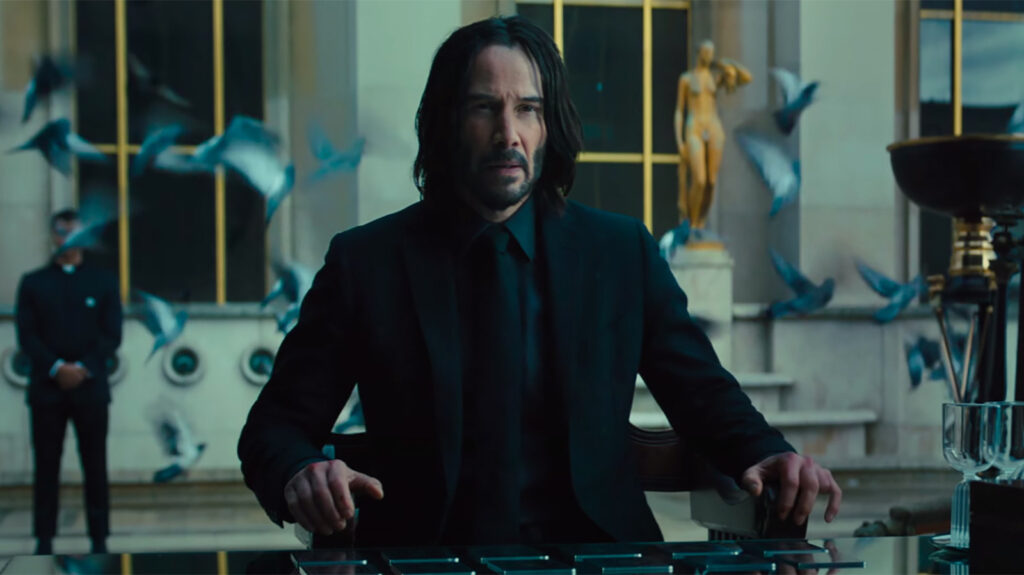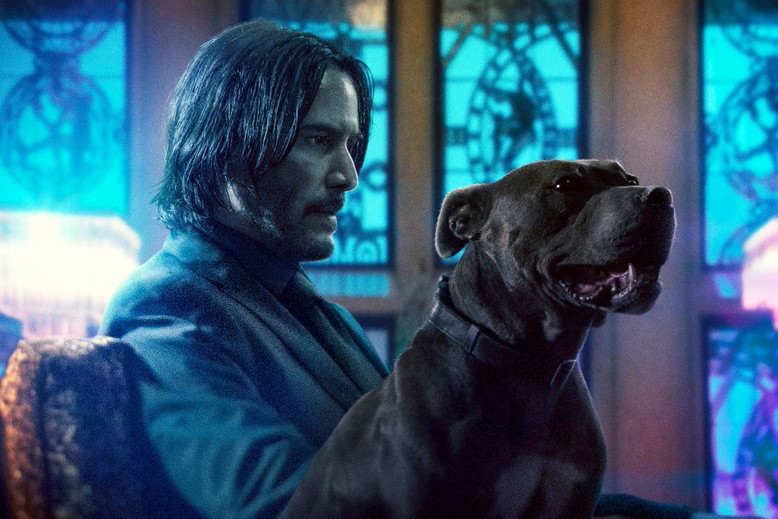It won’t be an overstatement that Chad Stalhelski’s Sleeper-hit 2014 Action film John Wick divided modern action film-scape into two eras: “Pre John Wick” Era and “Post John Wick” Era.
The franchise set a golden standard for modern action genre (neo-noir genre too). While most of the action franchises deteriorate with the addition of instalments, this new instalment cements the fact that John Wick franchise is one of the most consistent action franchises in Hollywood.
What started out as a minimal budget action entertainer in 2014, with John Wick Chapter 4 turned out to be a multi-million-dollar grand globe-trotting action spectacle.
Providing a Sensory Action Experience:
John Wick Chapter 4 borrows every great aspect from its predecessors and amplifies it 4-times to offering a definitive neo-noir action experience than just “watching”.
The distinct character sketches and meticulous production design contributes to the open-world action video game/VR Game reminiscent narrative structure like Watch Dogs, Red Dead Redemption and Grand Theft Auto, which has main quests and side-quests ultimately leading to a great action set-piece.
More than just a viewer you’re made to feel as a participant of the proceedings of the John Wick world experiencing the punches and blasts.
From the neon-lit Osaka city to the picturesque Paris streets, the stunt choreographers of the film use the geography in the most out-of-the-box manner and delivers the authenticity in every action set piece which sets a benchmark in terms of the level of intensity.
In a current scenario where most of the cookie-cutter action blockbusters prefer under-lit sceneries to cover-up the mishaps in technical side, John Wick 4 provides the visibility in action sequences making us recognise each and every move of the characters.
Cinematographer Dan Lausten and editor Evan Schiff makes some of the most unconventional yet creative choices by providing water like fluidity and vibrance in action sequences. The eagle’s eye view shot of the scene where John Wick (Keanu Reeves) kills the goons with Dragon-breath gun is noteworthy and totally provided the unmatched gaming experience (even without a VR headset/joystick) in silver screen.
The blend of Hard Rock and Synth in the Background score by Tyler Bates and Joel J Richards intensifies this video-game like audio-visual sensory experience.

Homage to the Old School Action and Modern Action genre:
Starting from the rising popularity of Akira Kurosawa’s Samurai films to John Woo’s “Gun-Fu” films, Asian Action films have been a great influence in Hollywood action genre.
Chad Stahelski and Keanu Reeves’ famous 1999 collaboration, The Matrix gave a great justice to the art of Gun-Fu Martial art styles. When these two unstoppable forces, once again joined the hands for John Wick in 2014 it was total carnage.
John Wick franchise doesn’t really try to mimic the John Woo films but derives great facets from it providing a new and original spin to it. More than the “Gun-Fu” influences, John Wick Chapter 4 takes its inspirations from Sergio Leone’s “Dollars Trilogy”, Bruce Lee’s Martial Arts films, Japanese Samurai Films and Jackie Chan Films making this instalment a genre amalgamation.
In one of his interviews,Chad Stahelski mentioned that the Eagle’s eye view Dragon breath-gun fight scene was inspired from an Indie Videogame titled Hong Kong Massacre. Be its making or its narrative or its setting, the world of John Wick bridges the gap between old-school and modern sensibilities providing an homage and at the same time standing on its own.
Behind the blood, there lies emotions:
Director John Woo says that “action films should reflect our deepest emotions and actions without emotions is useless”. The humane emotions that’s inherent in the franchise makes us anchor to our seats through every action set piece.
From the first film, every viewer thought that “how can a guy go on a killing spree for a dog?”
But Chad Stahelski provided the emotion with full conviction making you empathise with John Wick.
The further instalments explored the themes of brotherhood, loyalty, friendship, purpose and John Wick Chapter 4 provides more emotional drama than its predecessors adding the mythos to its world.
Charon (Late Lance Reddick) in this chapter emphasises how loyalty is an important quality where even Winston (Ian McShane) acknowledges how much he was more than just a Concierge but a “friend”. John Wick’s colleagues like Bowery King (Laurence Fishburne) blur the lines between good and evil in this neo-noir world.

Just like Gilgamesh from Epic of Gilgamesh who killed everyone who came across his path to attain immortality, John Wick character especially in Chapter 3 and 4, kills everyone who comes across his path to attain “freedom”.
To kill the unstoppable John Wick, Marquis De Gromant (Bill Skarsgard) sends Caine (Donnie Yen), a visually-challenged assassin who comes out of his retirement. In introspection, Caine and John Wick are two sides of the same coin. Their paths are same but their purposes are different.
John Wick’s character arc in this chapter can be encompassed with the words of James Baldwin – “The most dangerous creation of any society is the man who has nothing to lose”.
In his path to freedom, through the eyes of Caine, John Wick understands what’s freedom without a purpose and what it means to empathetic. He is given poetic freedom in the end that after all this spree he always destined to be a “loving husband”.
It’s no wonder that his goodbye was something reminiscent of Spike’s ending from the 90s Hajime Yatate’s “Cowboy Bebop” anime series which Keanu Reeves himself has acknowledged in many interviews.
In a nutshell, “John Wick Chapter 4” is an epic rhapsody of blood, blasts and bruises that is meant to be experienced in the big screens!